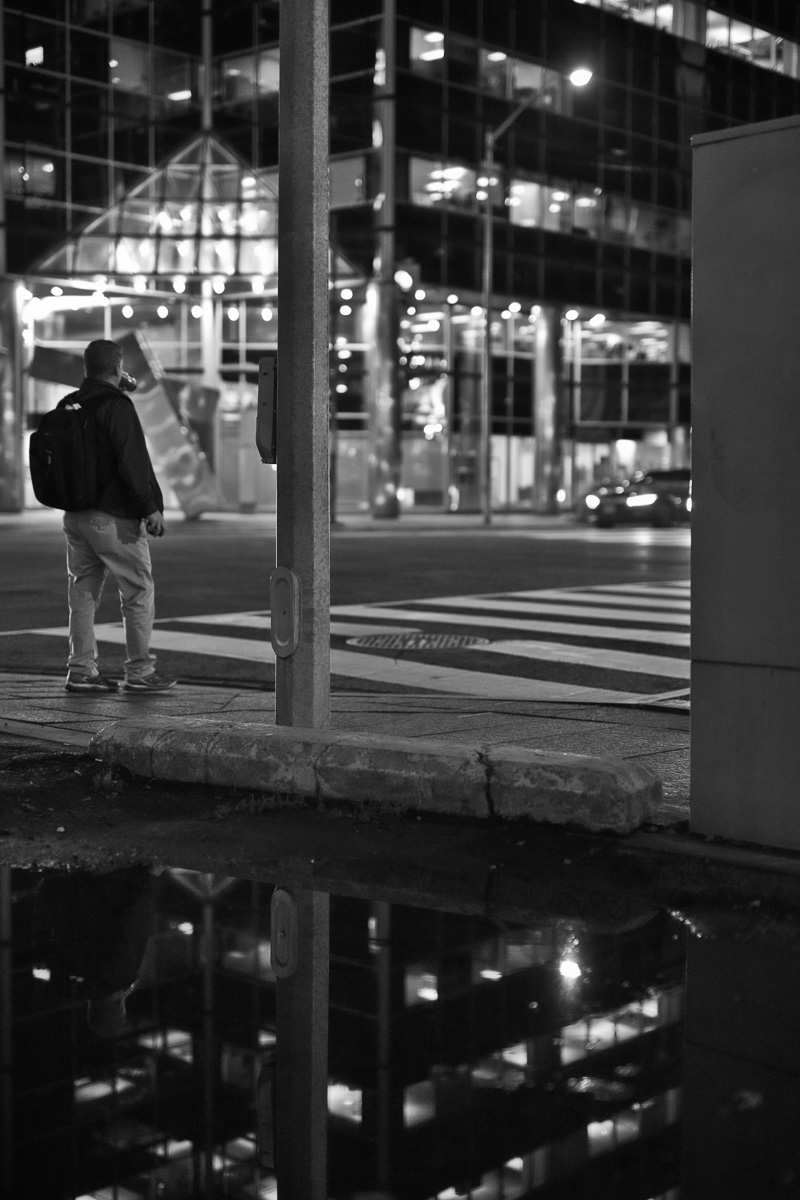Things disappear.
Graffiti disappears.
Clouds disappear.
Light disappears.
Posters disappear.
Art disappears.
Buildings disappear.
Sight lines disappear.
Political movements disappear.
Technologies disappear.
Fashions disappear.
Forests disappear.
Shops disappear.
People disappear.

The more I tread the same ground with my camera, the more I come to recognize that an unwitting theme of my work is disappearance. Sometimes disappearance happens by chance, but in a city, it often happens by intention. Maybe it would be more accurate, then, to call it erasure instead of disappearance. In my wanders, I often discover visual opportunities: ground I can stake where I frame an image then watch and wait for whomever—or whatever—to pass through my frame. If the strategy proves successful, I return to the same place in different light, different time of day, different weather conditions, to see if I can better my first effort.
This is the strategy I used a number of times when I crouched in the parking lot on the southwest corner of Church and Bloor. There was a depression in the pavement where a large puddle would form after rainfall and provide a nice reflective surface, especially in the evening. I’d stake my ground on the far side of the puddle and watch as people, and their corresponding reflections, waited for the light to change or crossed the street or dodged traffic.
The other day, an errand took me through that intersection and I noticed that the owners of the parking lot had filled the depression with fresh asphalt. The parking lot is, after all, a business, and my big puddle was depriving it of the revenue from two parking spaces. Now, there were yellow lines on the fresh asphalt and cars sitting on my strategic spot. It was no longer possible to get shots I’d been getting before.
Things disappear.